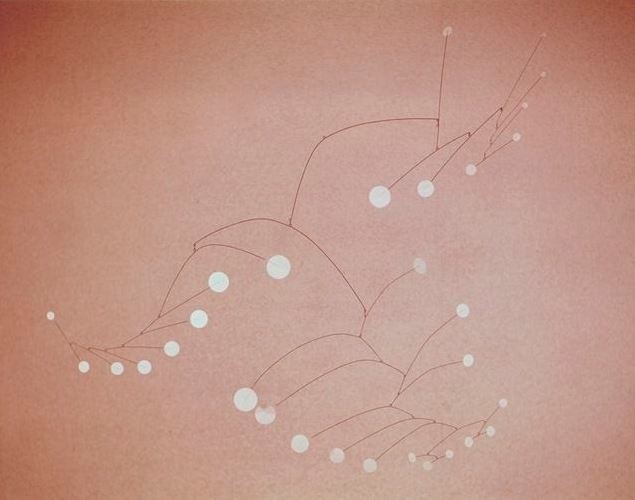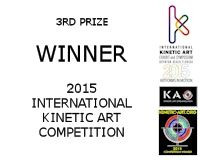Confused about the most expensive hanging mobile ever sold
I received an email the other day asking if I could make a reproduction of Calder‘s “Snow Flurry”, which I wouldn’t be allowed to do because all of his works are copyrighted. But it made me take a closer look at the mobile and I came across something that was rather confusing.
The “Snow Flurry” by Alexander Calder is the most expensive hanging mobile ever sold to date (May 2012), only surpassed by “Lily of Force” which is a stabile by Calder [Update: “Poisson volant (Flying Fish)“, a hanging mobile Calder made in 1957, sold for $25,925,000 on May 13th 2014, a new world auction record for Calder]. It realized a hammer price of US$10,386,500 at Christie’s Post-War and Contemporary Art Evening Sale at the Rockefeller Plaza, New York, on on May 8th 2012. Here’s a photo from the auction:
But here’s what confuses me about this. The following is the photo of “Snow Flurry” that Christie’s posted on their site. Count the elements on the mobile.
21 elements. Now, following is the photo of “Snow Flurry” that the Calder Foundation has on their site. Count the elements on that mobile, too.
30 elements. 9 elements more.
First I wondered if part (9 elements) of the “Snow Flurry” that the Calder Foundation has displayed maybe got lost or destroyed somehow, but then I noticed that besides the number of elements on each, if you pay close attention to the structure of each mobile you’ll realize, these are clearly two different mobiles.
My best guess would be that Calder made more than one hanging mobile with the same name. If that’s the case, I would be surprised that Christie’s wouldn’t be clarifying it in their description of the mobile.
The mobile sold came from Eliot Noyes‘ estate who was a friend of Calder’s.
I’ll post an update if I find out more.
Update: I received the following via email a couple of days ago from Jim in Portland, ME: “It appears that Calder made at least several numbered mobiles called Snow Flurry, all a little different. See this photo regarding the one at MoMA, which is identified as Snow Flurry I. There is one now at the Portland, ME Museum of Art (where I live), which is called Snow Flurry III. I presume the one that sold at auction in 2012, and which you mention in your original post, was a different Snow Flurry than either of these. I wonder how many of them he made? Snow Flurry III is really quite amazing in person.” Thanks, Jim!
__________
Here’s a beautiful video of the 21 element “Snow Flurry”:




